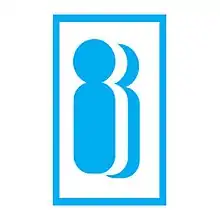Indian Institute of Banking and Finance
The Indian Institute of Banking and Finance (IIBF) is a registered company which imparts education in banking and finance.[1] It is known for its flagship courses, the Junior Associate of Indian Institute of Bankers (JAIIB)/Diploma in Banking and Finance (DBF) and the Certified Associate of Indian Institute of Bankers (CAIIB). It is the professional institute for Bankers in India. With its membership of over 700 banks and financial institutions as institutional members and about 300,000 of their employees as individual members, IIBF is the largest Institute of its kind in the world.
 | |
| Type | Public |
|---|---|
| Founded | 1928 |
| Headquarters | Kurla West, , |
Key people |
|
| Website | iibf.org.in |
History
The institute was founded in 1928 as the Indian Institute of Bankers on the model of the London Institute of Banking and Finance to train bankers and finance professionals. In 1925, with the encouragement of Sir Basil Blackett, the finance member in the executive council of the Viceroy of India, the Imperial Bank of India wrote a letter to The London Institute of Bankers requesting the bank to include questions on Indian banking in the institute's examinations failing which banks in India would have to start their own institute. In a reply dated 25 October 1925, Ernest Sykes, the Secretary of the London Institute of Bankers, encouraged Indian bankers to start their own institute. A detailed discussion was held on the subject at the board room of the Bombay head office of the Imperial Bank of India on 12 March 1927 and the Indian Institute of Bankers was established as a result on 30 April 1928 with Sir Norcot Warren, Managing Governor of the Imperial Bank of India as the first President. Sir Warren retired shortly afterwards and was succeeded by Sir Norman Murray. The first general meeting was held at Bombay on 9 July 1928 and the institute conducted its first associate examinations between 6 and 13 April 1929. A total of 89 candidates appeared for the examination of whom, only one, T. M. Srinivasaraghavan of the Imperial Bank of India, Cuddapah passed both parts of the two-part examination.
Academics
- The Flagship Courses of IIBF are JAIIB or its equivalent PG Diploma in Banking & Finance (DBF) and CAIIB.
- Other courses offered are
Diploma in Treasury Investment & Risk Management, Diploma in International Banking & Finance, Diploma in Banking & Technology, Diploma Examination for Micro Finance Professionals, Diploma in Comm Derivatives for Bankers, Advance Diploma in Urban Co-operative Banking, Diploma in Advanced Wealth Management and various Certificate programs.
These are offered in distance mode. The pedagogy of Distance Learning offered by the Institute is (i) publishing specific courseware for each paper/examination; (ii) publishing work books; (iii) tutorials through accredited institutions; (iv) contact classes; (v) virtual classes; (vi) e-learning through portal; (vii) campus training for selected courses, etc. The courses are considered to be comprehensive as well as exhaustive and recognized as the best in the field in India.[2]
Governing council
The IIBF governing council consist of members/representatives from the Reserve Bank of India, public sector banks, private and foreign banks, important finance related bodies etc. The Education and Research Committees of the Institute consist of eminent practitioners in the field. Shri Ashwani Kumar, also chairman of Dena bank is the present president of IIBF.[3]
Notes
- "Vernacular' drive for financial inclusion launched", Business Line, 10 November 2010, retrieved 26 April 2011
- By, Untouched (18 December 2008), "Tiny sector, big prospects", The Telegraph, Calcutta, India, retrieved 26 April 2011
- "Bully banks face double leash", The Telegraph, Calcutta, India, 1 December 2007, retrieved 26 April 2011